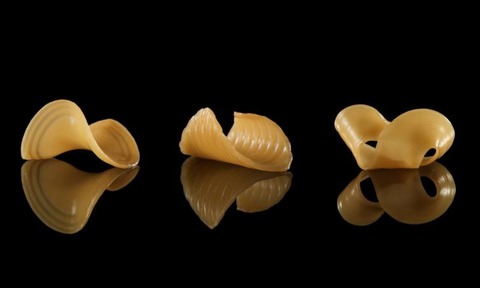MIT engineers develop shape-shifting food ‘to democratise design of noodles’
29 May 2017

Engineers at the Massachusetts Institute of Technology (MIT) have developed edible films that sprout into 3D structures when submerged in water.
The films, described by the engineers as “culinary performance art”, could provide a practical way to reduce food shipping costs. For instance, they could be stacked together and shipped to consumers, then morph into their final shape when immersed in water, the engineers added.
With this tool, we want to democratise the design of noodles
Lead author Lining Yao
MIT research scientist Wen Wang said: “We did some simple calculations, such as for macaroni pasta, and even if you pack it perfectly, you still will end up with 67% of the volume as air. We thought maybe in the future our shape-changing food could be packed flat and save space.”
The films, made using gelatine and starch, can wrap around beads of caviar, as well as spaghetti – which can “spontaneously” divide into smaller noodles when dunked in a hot broth, the engineers said.
Wang said: “We did many lab tests and collected a database, within which you can pick different shapes, with fabrication instructions.”
As part of the research, the engineers used a 3D printer to pattern cellulose onto films of gelatine, and have also outlined ways in which users could reproduce similar effects with more common techniques, such as screenprinting.
Lead author Lining Yao said: “We envision that the online software can provide design instructions, and a startup company could ship the materials to your home. With this tool, we want to democratise the design of noodles.”
The research was conducted by MIT’s Tangible Media Group and part funded by Food + Future, a start-up sponsored by Target Corporation.
Readers' Comments
There are no comments on this article, leave a comment below to have your say
Have Your Say
The comments have closed for this article

